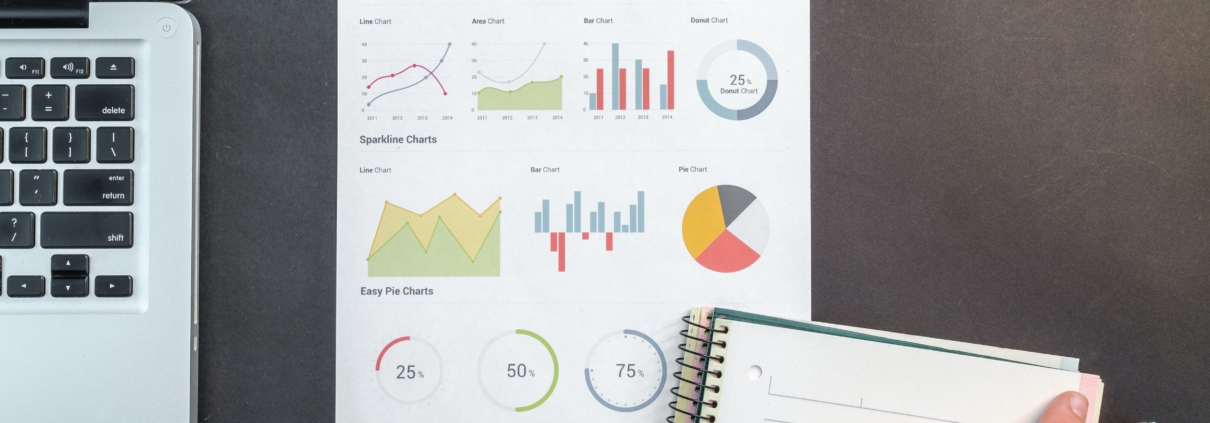The world of social media metrics is evolving at a rapid pace, making it nearly impossible to understand without at least a little bit of background information. Whether you’re trying to get new followers or increase engagement, there are a few key metrics for social media performance that are more important to watch than others.
In this guide, we’ll go over what social media metrics are, why they’re important, how to find them, and which ones you should be paying closest attention to. Consider these basic KPIs to be the foundation of your digital marketing strategy — there is more to know, but mastering these will help you quickly make improvements across the board.
As a general rule, seek out rates and more nuanced metrics, avoid overemphasizing simple counts and totals. Here, we highlight five of the most important social media metrics you should be tracking – and they’re not just the usual suspects.
Why Do We Need to Measure Success?
Numbers are the universal language, especially for marketers. Every effort and activity we do has to be translated into tangible numbers. There is no way for marketers to measure the effectiveness of various campaigns unless the measurement of important metrics is in place.
Now that you have set goals for your social media marketing strategy, it’s time to think further — measure the performance. Don’t be misguided: Likes and shares aren’t the main numbers to monitor. There are more important metrics that you should rely on to assess the effectiveness and success of your social media activities.
These five metrics will focus on the first two layers of the marketing funnel. We will follow up with a post entirely dedicated to conversion metrics later. Here’s a look at awareness and engagement as they related to marketing:
- Awareness reflects the metrics that connect your audience (potential customers) with your brand
- Engagement reflects the numbers on how your audiences interact with your content
Awareness Metrics to Measure Success
Awareness is the first stage of our marketing funnel. our main focus at this stage is to get attention from our audience and make them aware of our product or brand.
1. Brand awareness
This is the general attention on and understanding of your brand that you get from your audience. Measuring brand awareness may be challenging, especially if you’re just starting your social media game.
Our advice for startups is to create a social media posting schedule and stick to it. Try to gather some information before actually measuring it. Once you have a functioning social media space, you will be able to measure your brand awareness.
For us, one of the best indicators for measuring brand awareness is mentions of your brand name. You should aim to track the who, why, and when of mentions of your brand on social space. Sometimes, if you aren’t directly tagged in a post, it may be hard to track. I use “Mention” to get our daily updates on who mentioned our brand, on which platforms, and what they said. Give it a shot!
Also, you should monitor trends. This means to try and see what people are in fact searching for. A great tool for this is Google Trends.
2. Post reach
Post reach is a number of people who have seen your post since it was published. It’s an important metric as it will give you insights into your targetting — whether your target is too narrow or too broad.
If your reach seems low, try adjusting your audience settings. If you are using Instagram, try adding more diverse hashtags; if you’re using Facebook ads, try to adjust your audience settings.
You can easily calculate your post reach. Take any post, divide the number of people who have seen it by the total number of followers, and multiply by 100. For example, the number of people who’ve seen your post is 1,567 and you have 5,689 followers. This will translate into a 27.5% reach. We always try to have our content hit at least the 40% mark.
3. Audience growth
In simple terms, this metric measures how fast you’re gaining new followers during a certain period of time. You may set your own goals and develop campaigns to achieve the desired numbers.
To keep our team motivated and accountable to our social media work, we try to measure this weekly (every Monday). We simply compare this Monday’s numbers with the stats from last Monday.
Believe it or not, this is one of the most important metrics for any marketer as it’s easy to neglect the growth in followers. Seeing how many new followers you’ve gained in seven days will motivate you to do better next week.
You can calculate your growth rate by dividing the number of new followers by the number of total followers and multiplying it by 100. For example, if since last Monday, we have gotten 267 new followers, and our total number of followers now is 4,567, this means that our weekly growth rate is 5.8%.
You should set your own targets and decide how fast you want to grow.
Engagement Metrics to Measure Success
Engagement metrics are among the most interesting ones to analyze because they will give you an insight into how and with what kind of content your audience interacts the most. This is mainly about comments, shares, likes, reposts, etc.
4. Average engagement rate
Average engagement rate is a percentage of people who interact with your content. The higher the rate, the more engaged people are with your content, which is great as it should be your main objective.
It’s calculated by taking all engagement (usually likes, shares, and comments) within a period of time, dividing it by the total number of followers, and multiplying by 100. For example, someone gets 356 likes/shares/comments on their content this week. They currently have 1,098 followers. This translates into a 32% engagement rate.
The good news about measuring the engagement rate is that LinkedIn and Facebook have it automatically calculated for you. As for Instagram, you may rely on your own calculation or use Tanke to calculate for you.
(Off-topic: Tanke is a great tool to analyze the basic information for Instagram accounts and to spy on your competitors.)
5. Instagram saves
Likes and comments are dropping on Instagram. However, there is a new hot metric that you can start relying on to measure engagement. It’s how many people saved your post.
Tracking Key Metrics For Social Media Performance Is Crucial For Success
Tracking social media figures has never been easier as most of the platforms offer automated calculations. All you need to do is actually pay attention to these figures and make sense of them.
Tracking and analyzing should be a big part of your social media game. Knowing how your posts perform, you will be able to better adjust your campaigns, strategize, and eventually achieve better results.
It’s also exciting to actually know how your posts compare with each other. You will be able to discover patterns and see what works and what doesn’t. In the end, you want to give only what works to your audiences so that they engage more and convert more readily.
Which metrics do you use to measure the ROI of your marketing efforts?

